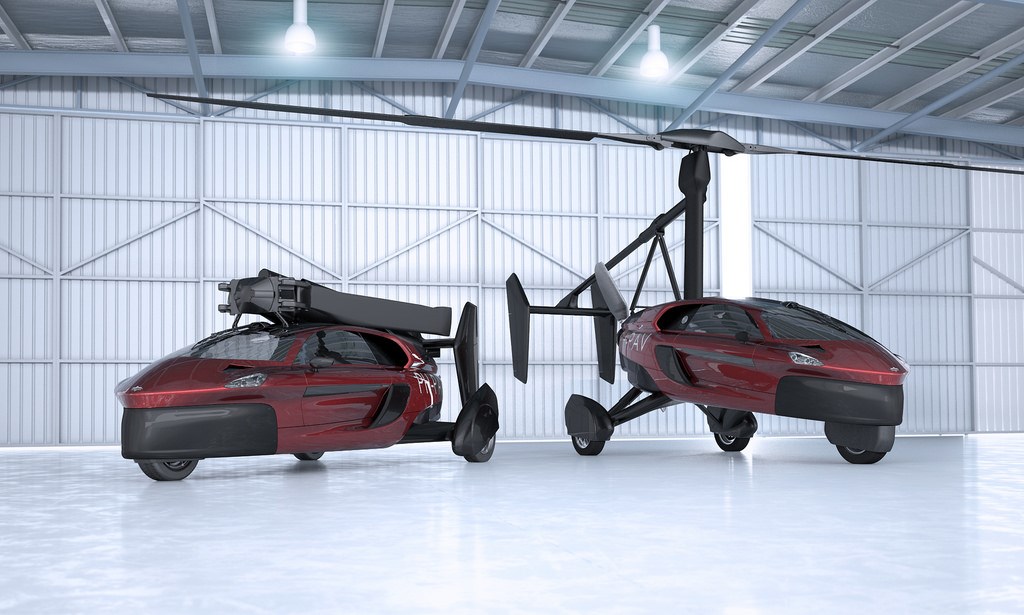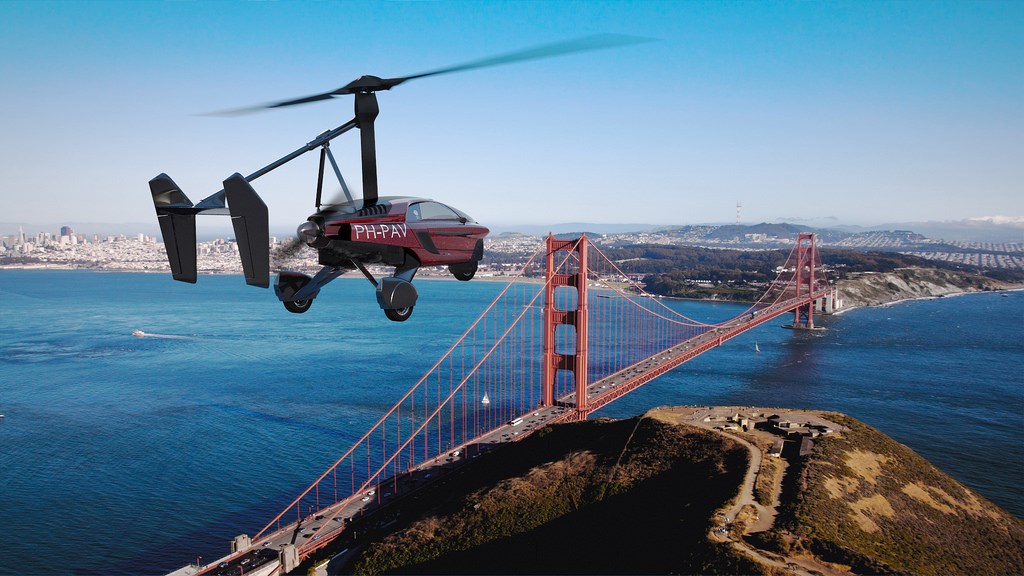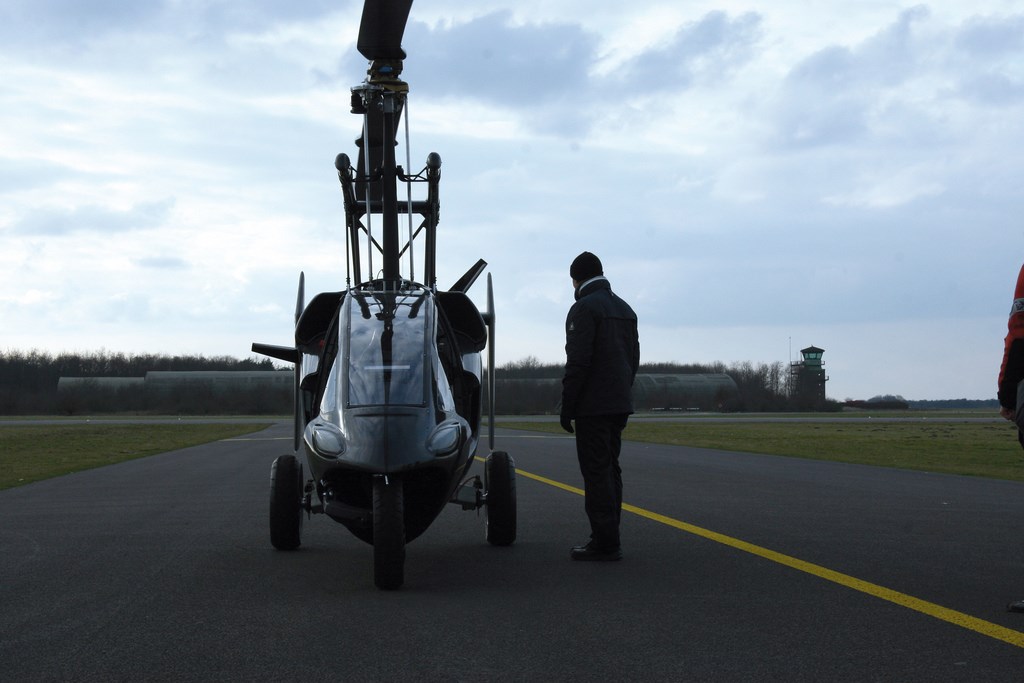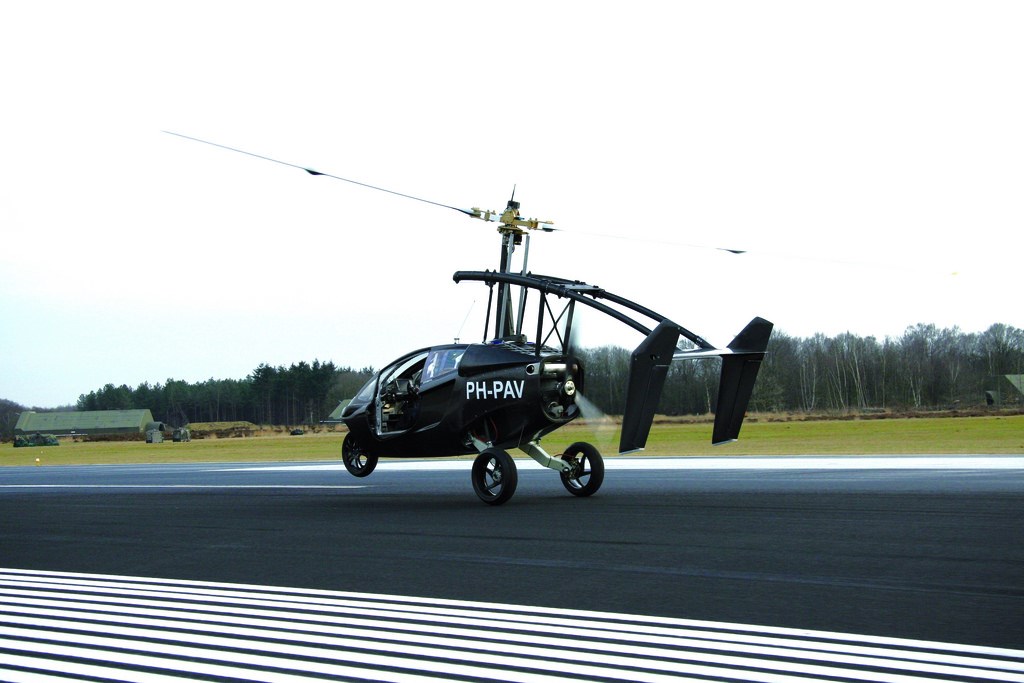From The Jetsons to Chitty Chitty Bang Bang, flying cars have long captured the imagination.
Now one Dutch firm is set to make the technology a reality.
PAL-V International said it will begin production of its Personal Air and Land Vehicle (Pal-V) will begin in October.
Customers willing to part with the cost of what promises to be a hefty price tag could get their hands on one of the machines as early as next year.
Pal-V is a three-wheeled flying vehicle that can carry two people and will be certified for use on the roads and in the skies.
After years of testing, the company aims to pip its competitors to the post by becoming the world's first mass manufacturer of a flying car.

Final assembly on the €499,000 (NZ$768,000) Pal-V will start in October and the firm, based in Raamsdonksveer in the Netherlands, is aiming to deliver its first flying car to its first customer by the end of 2018.
Speaking to AFP, chief marketing officer Markus Hess said: 'This kind of dream has been around for 100 years now.
'When the first airplane was invented people already thought "How can I make that driveable on the road?"'
In 2019, the company expects to produce between 50 and 100 of the vehicles, before ramping up to 'quite a few hundred' in 2020.
But it won't be cheap, with the first edition Pal-V Liberty costing €499,000 (NZ$768,000).
The slightly cheaper Pal-V Liberty Sport, to be made next, has a price tag of €299,000 ($460,000).

The firm has designed the car so at the flick of a button the blades fold down and gather like a bat's wings on the top.
And it has incorporated a 2005 breakthrough, when Dutch company Carver invented a tilting system for three-wheelers, to counter Pal-V's high centre of gravity and make it roadworthy.
The company insists the Pal-V is not a helicopter, where blades are powered by an engine, but is a gyroplane in which the blades rotate thanks to airflow.
Even if both engines cut out, the blades will still turn.
So 'even if you go at zero speed it still keeps rotating and you are not going to drop out of the sky,' added Mr Hess.

Different versions of a flying car are being developed in the Czech Republic, Slovakia, Japan, China and the United States.
The lucky owner will need both a driving licence and a pilot's licence.
But with the keys in hand, the owner will be able to drive to an airfield for the short take-off and, after landing elsewhere, drive to the destination in a door-to-door experience.
Parts are on order, with the first already in stock.
Once built, the vehicle will have to complete at least 150 flying hours, and undergo extensive tests to receive its certification from the Cologne-based European Aviation Safety Agency (EASA).
Once finalised this will allow them to certify under FAR 27 regulations in America.

The Pal-V uses normal unleaded petrol for its two 100-horsepower engines.
The 27-gallon gas tank provides a flying range of between 400 to 500 kilometers at an altitude of up to 3,500 metres. On the road, it can drive for up to 1200 kilometers.
The helicycle has a top speed of around 170 km/h and goes from 0 to 100 km/h in under eight seconds. It requires a 165 metre runway for take-offs and just 30 metres for landing.
It is made of carbon fibre, titanium, and aluminium and weighs 680 kg. While driving, the lowered suspension and tilting 'cockpit' adds to the sports car feel, the firm says.
PAL-V Specs
The Pal-V uses normal unleaded petrol for its two 100-horsepower engines.
The 27-gallon gas tank provides a flying range of between 248 an 310 miles (400 to 500 kilometres) at an altitude of up to 11,500 feet (3,500 metres).
On the road, it can drive for up to 750 miles.
On both air and land, the vehicle has a top speed of around 105 mph (170 km/h) and goes from 0 to 60 mph (0 to 95 km/h) in under eight seconds.
It requires a 540ft (165 metre) runway for take-offs and just 100 feet (30 metres) for landing.
It is made of carbon fibre, titanium, and aluminium and weighs 1,500lbs (680 kg).
Owners will need both a driving licence and a pilot's licence.
-Daily Mail

















